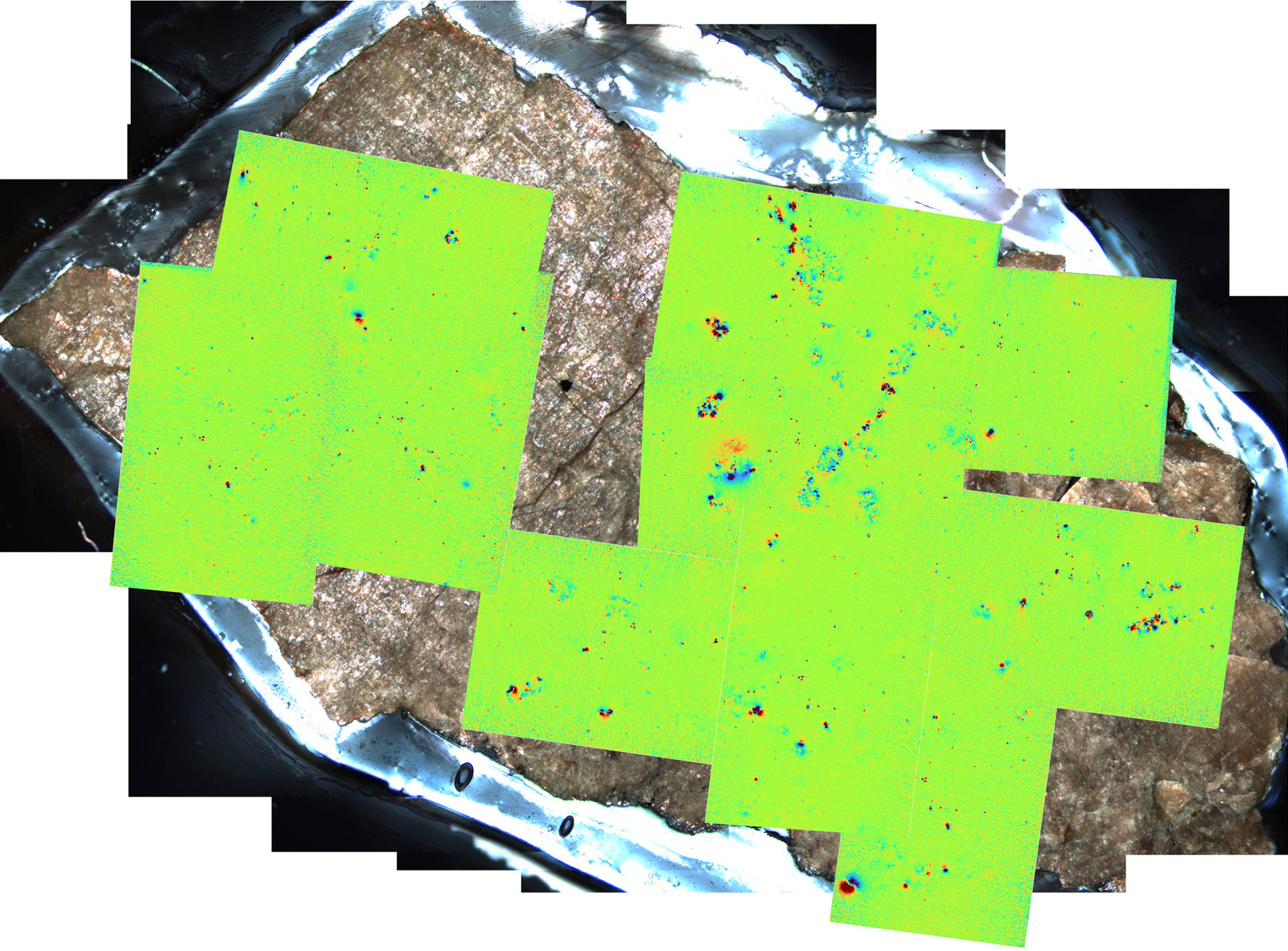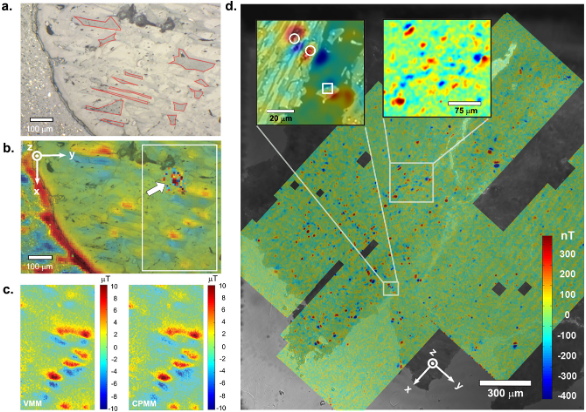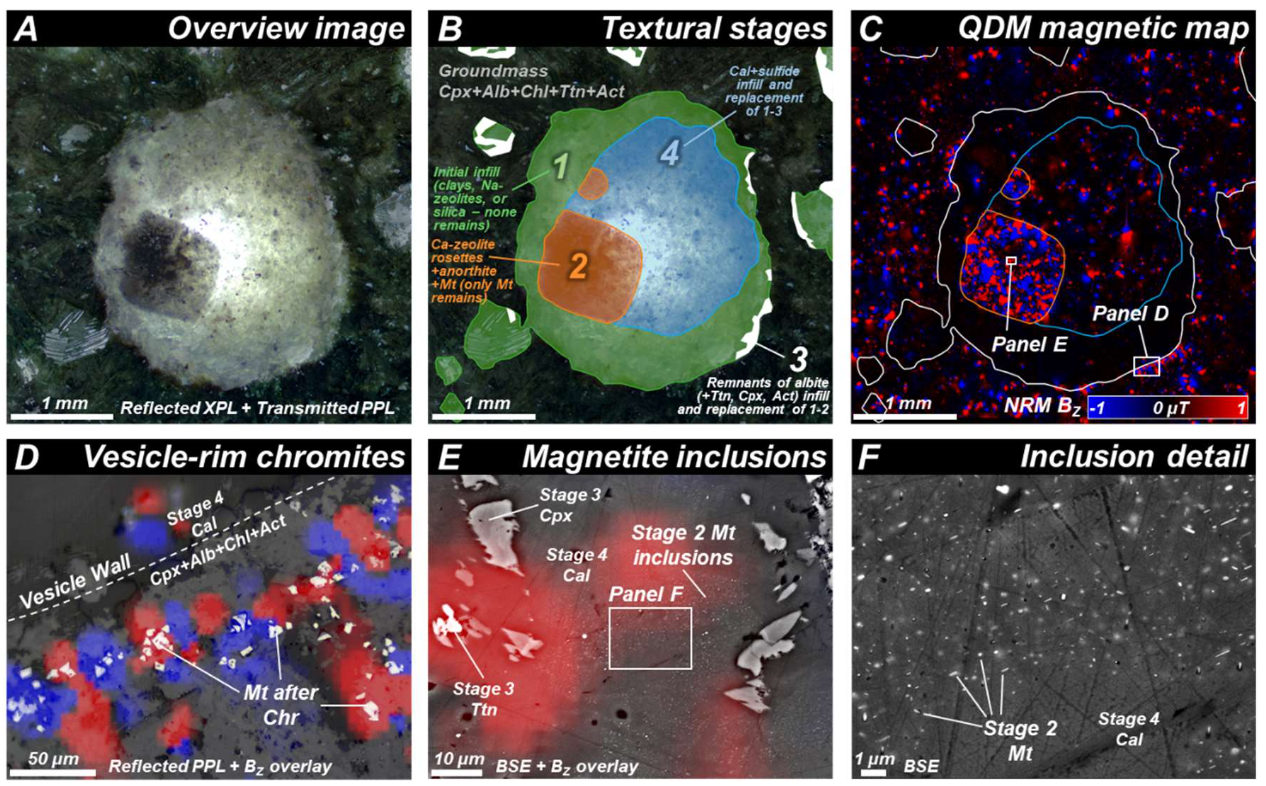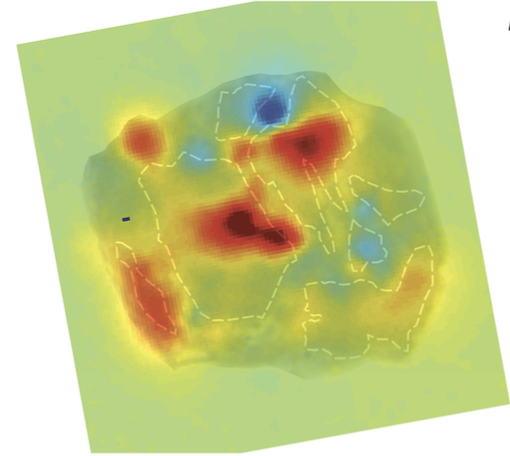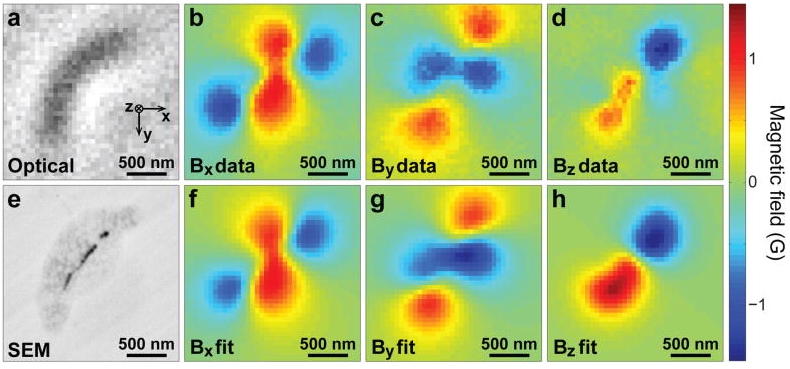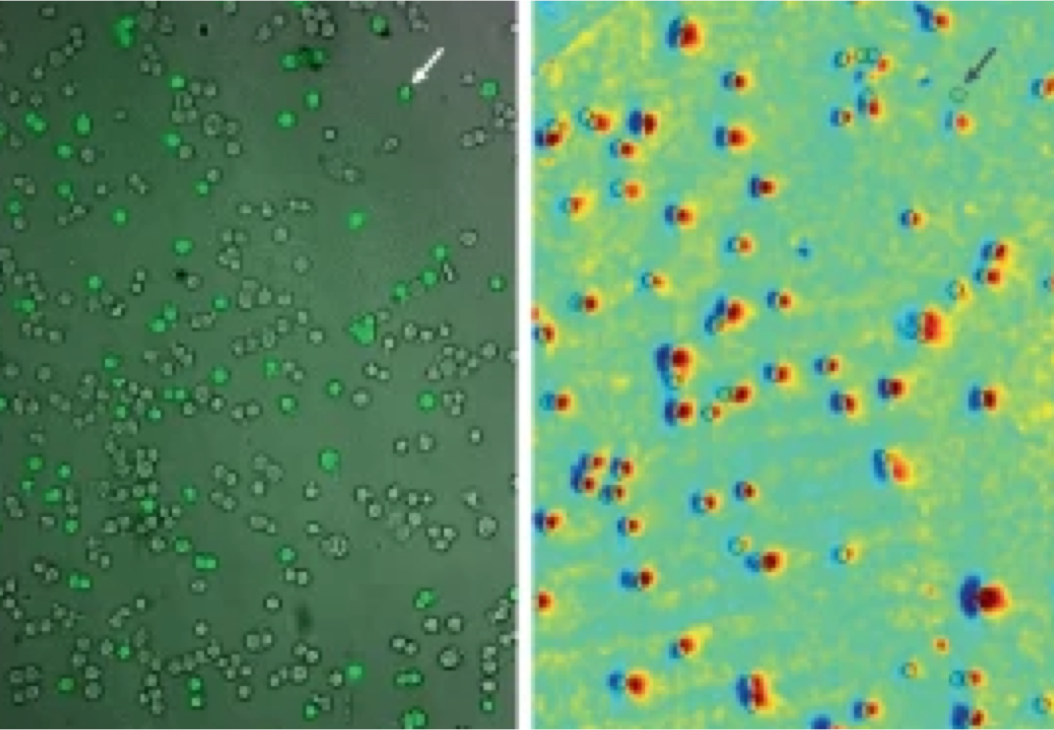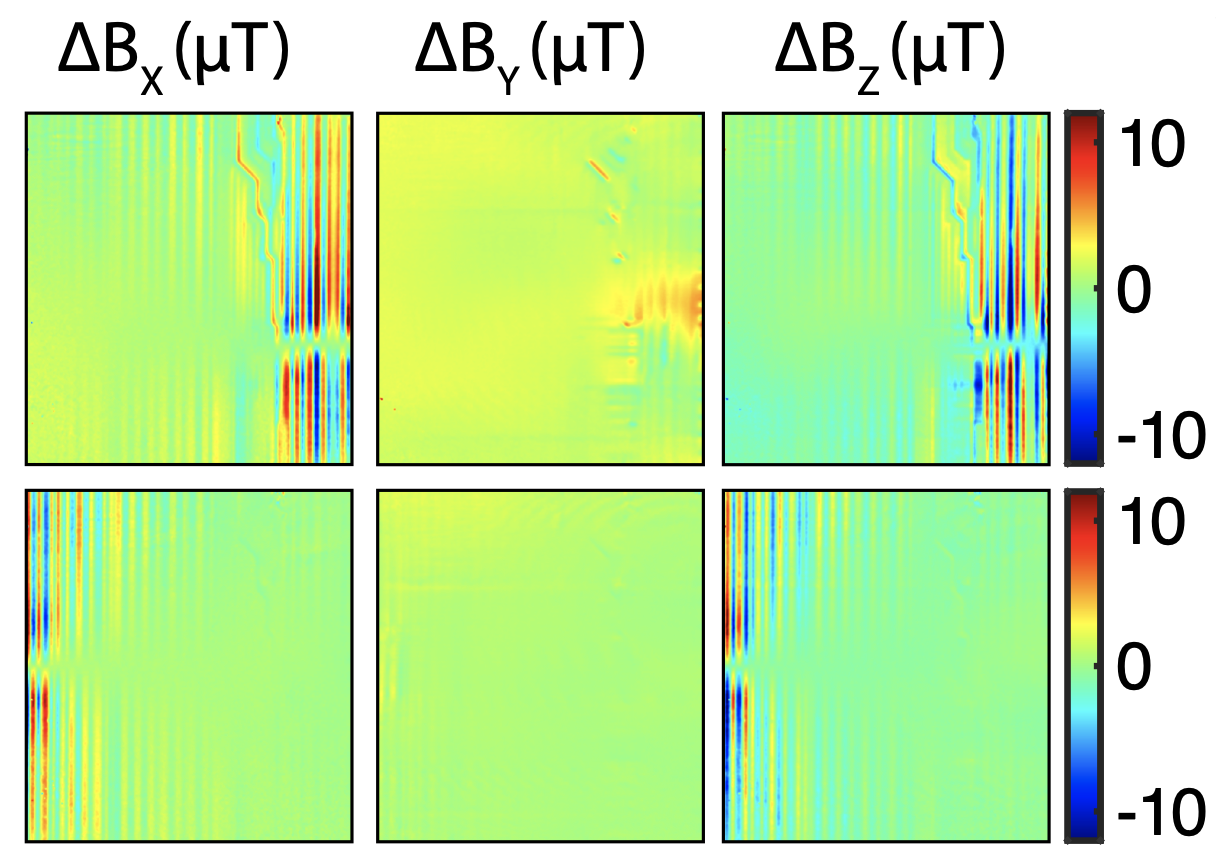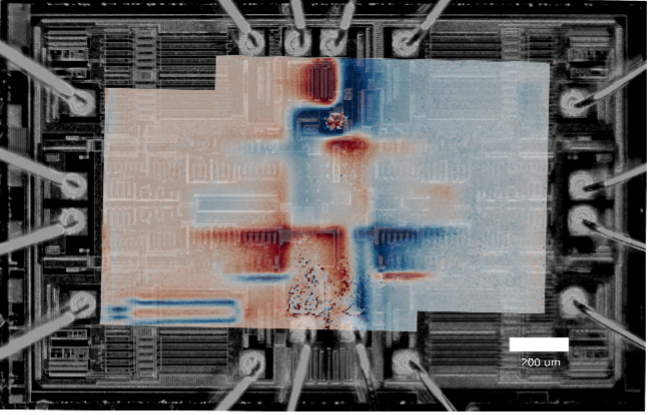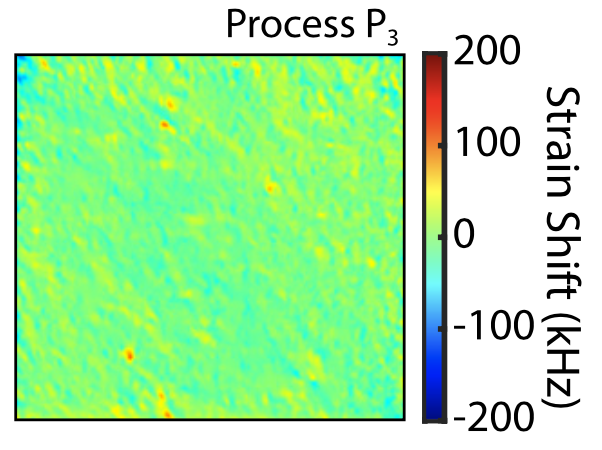Applications
Rock Magnetism
The QDM has unlocked deeper understanding of our terrestrial world and solar system, rapidly becoming a valuable tool in remanent magnetization studies of geological samples. As an example, magnetic imaging of magnetic grains in 4-billion-year-old zircons and meteorites has better constrained our understanding of the magnetic geodynamo of both Earth and Mars. QDM analysis of modern speleothems has also enabled more reliable interpretation of a new paleoclimate proxy.
Life Science
The QDM is a broadly useful tool in the life sciences. For example, magnetic-labeling of tissues and cells has shown utility in tracking and identifying rare cell types, especially in opaque samples. QDMs can also be used to measure magnetic sources occurring naturally in living systems, such the magnetite grains produced by magnetotactic bacteria, iron mineralization in chiton teeth, and malaria hemozin nanocrystals.
Electronics
QDMs can be used to map the magnetic fields produced by currents flowing in electronic devices enabling high-resolution imaging of decapsulated chips, activity monitoring in intact devices, and board-level surveys.
Condensed Matter
QDMs have also found applications in material science and condensed matter studies, such as probing thin magnetic films used for magnetic memory and the magnetic fields produced by current flow in graphene-based devices.
Imaging Viscous Flow of the Dirac Fluid in Graphene Using a Quantum Spin Magnetometer
Ku et al., Nature 583, 537–541 (2020).
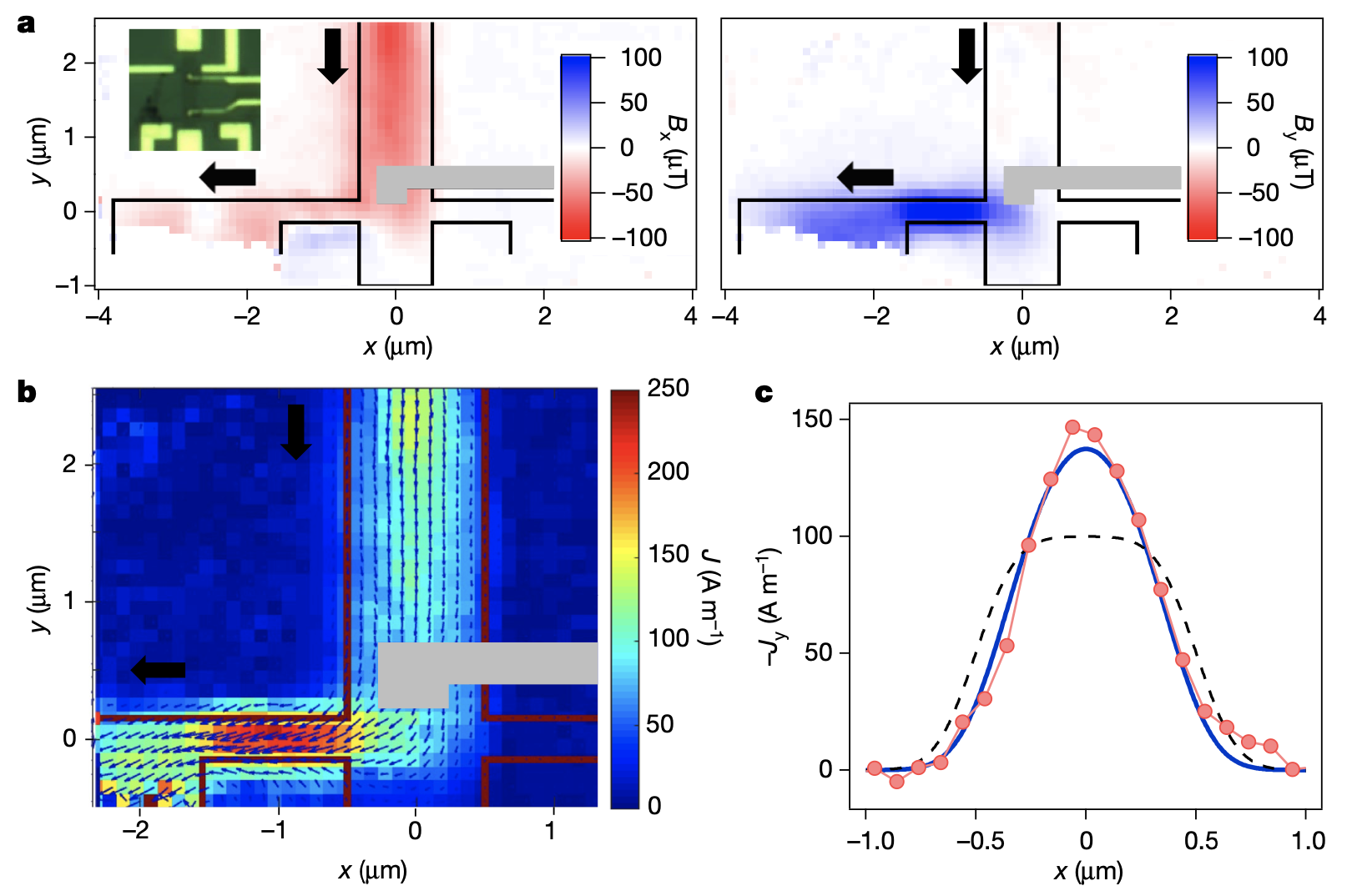
Above-Room-Temperature Ferromagnetism in Thin van der Waals Flakes of Cobalt-Substituted Fe5GeTe2
Chen et al., CS Appl. Mater. Interfaces, 15, 2, 3287–3296 (2023).
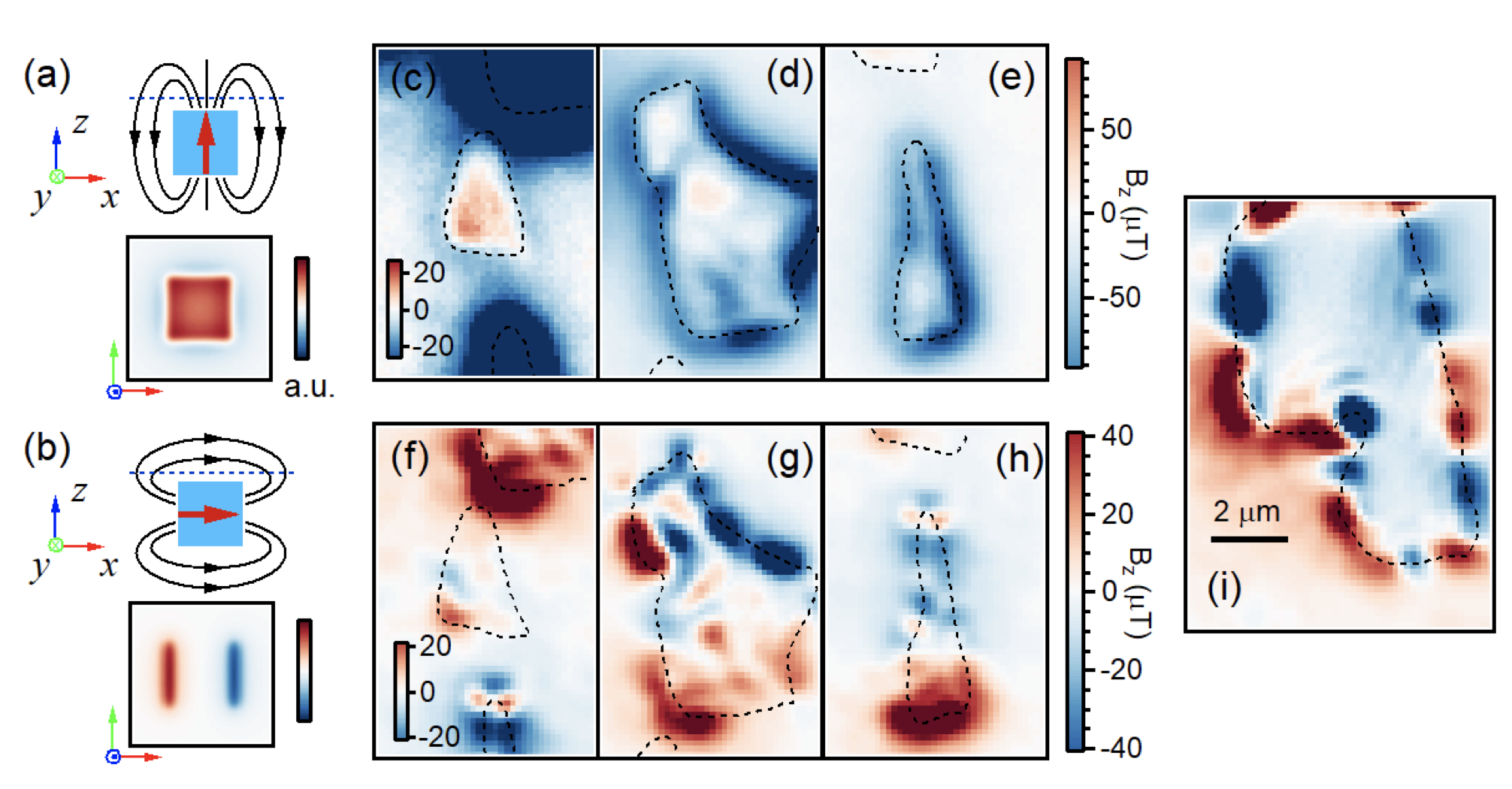
Quantum Research
The QDM is an accessible platform for research using nitrogen-vacancy (NV) defects in diamonds, including studies of NV ensemble spin properties and mapping of crystal lattice strain. With a QDM, researchers and students can get up and running faster using optimized hardware coupled with reliable software.
